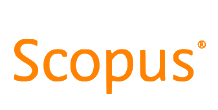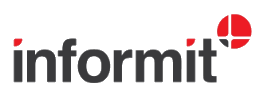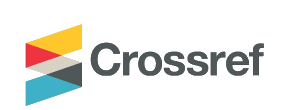Implementing the Threshold Learning Outcomes for Agriculture at university
DOI:
https://doi.org/10.21153/jtlge2016vol7no1art585Keywords:
curriculum mapping, learning and teaching academic standards for agriculture, AgLTASAbstract
The national Learning and Teaching Academics Standards statement for agriculture (AgLTAS) defines the nature and extent of the discipline; and provides threshold learning outcomes (TLOs) that define what a graduate should know, understand and do at graduation. The AgLTAS standards are endorsed by the Australian Council of Deans of Agriculture and can be used to communicate to potential and current students the minimum standards of their degree, but can also be used to inform curriculum design. While the AgLTAS document provides explanatory notes to assist educators to further understand the intent of the TLOs there are no exemplars on how the AgLTAS standards can be implemented. This paper presents two case studies of how academics at the University of Tasmania and the University of Adelaide used the AgLTAS to map their respective agriculture curricula. Curriculum mapping was used to evaluate the links between the curriculum and the target learning outcomes, and to identify gaps and areas for improvement. Results include the curriculum maps but also a survey of academic staff and their reactions to the TLOs, plus a reflective commentary on what we believe are the next steps and implications of the AgLTAS for curriculum development, industry engagement and graduate employability in the agriculture discipline.
Metrics
References
Acuña, T., Kelder, J., Bobbi, P., & Gray, T. (2014). AgLTAS: Curriculum Mapping Tool User Guide. University of Tasmania. Available at: http://www.agltas.edu.au/resources/curriculum-mapping-tool/.
ALTC (2011). Resources to assist discipline communities to define threshold learning outcomes (TLOs). Sydney: Australian Learning and Teaching Council.
Australian Council of Deans of Agriculture (2009). Capacity in Agriculture - a matter of national concern. Submission to PMSEIC.
Australian Government. (2012). Higher education and skills training to support agriculture and agribusiness in Australia. Canberra: Senate Standing Committees on Education Employment and Workplace Relations.
Australian Government. (2015). Higher Education Standards Framework (Theshold Standards) 2015. Canberra: Department of Education and Training.
Australian Governament (2013). The Australian Qualifications Framework. Canberra: Department of Education and Training. Available at: www.aqf.edu.au.
Botwright Acuña, T., Kelder, J. A., Able, A. J., Guisard, Y., Bellotti, W. D., McDonald, G., Doyle, R., Wormell, P., & Meinke, H. (2014). Academic, industry and student perspectives on the inclusion of 'vocational knowledge' in a 'Learning and Teaching Academic Standards Statement' for agriculture. Journal of Learning Design 7 (2),1–15.
Botwright Acuña, T. L., Able, A. J., Kelder, J., Bobbi, P., Guisard, Y., Bellotti, W., McDonald, G., Doyle, R., Wormell, P., & Meinke, H. (2014). Learning and Teaching Academic Standards Statement for Agriculture. Sydney, Australia: Office for Learning and Teaching.
Botwright Acuña, T. L., Kelder, J., Lane, P., & Hannan, G. (2012). Aligning an Agricultural Science Curriculum with the national Science threshold learning outcomes. In Australian Conference of Science and Mathematics University Educators. University of Sydney, September 26–28.
Brawley, S., Clark, J., Dixon, C., Ford, L., Grolman, L., Ross, S., & Upton. S. (201). Applying standards to tertiary-level history: Policy, challenges and the After Standards project. History Australia 8, 177–94.
Cowan, H. (2010). Review of post-secondary agricultural education in Western Australia. WA Government. Available at: http://www.parliament.wa.gov.au/publications/tabledpapers.nsf/displaypaper/3812579a4 53038438c668362482577a70001dba1/$file/tp2579.pdf.
Creswell, J. (2003). Research design: Qualitative, quantitative, and mixed methods approaches. 2nd ed. London: Thousand Oaks.
Dowling, D., & Hadgraft. R. (2012). What should we teach? Defining your discipline to drive curriculum renewal: An environmental engineering case study. Paper presented at the SEFI European Society for Engineering Education, Thessaloniki, Greece 23–26 September 2012.
Ervin, L., Carter, B., & Robinson, P. (2013). Curriculum mapping: Not as straightforward as it sounds. Journal of Vocational Education and Training, 65 (3), 309–18.
Hogan, P. (2000). Gadamer and the philosophy of education. In Encyclopedia of Philosophy of Education 12(01). Australia: Philosophy of Education Society of Australasia and the Educational Philosophy and Theory journal.
Jones, A. (2009). Redisciplining generic attributes: The disciplinary context in focus. Studies in Higher Education, 34, 85–100.
Jones, S., & Holmes, J. (2013). Learning and Teaching Academic Standards at University of Tasmania. A guide to Course Learning Outcomes. Hobart: University of Tasmania.
Jones, S.,Yates, B., & Kelder, J. (2011). Learning and Teaching Academic Standards Statement for Science. Sydney: Australian Learning and Teaching Council.
Lam, B., & Tsui, K. (2013). Examining the alignment of subject learning outcomes and course curricula through curriculum mapping. Australian Journal of Teacher Education, 38 (12), 97–119.
Lawson, R., Taylor, T., Failshaw, E., French, E., Hall, C., Kinash, S., & Summers, J. (2011).
Hunters & gatherers: Strategies for curriculum mapping and data collection for assurance of learning. Paper presented at the ATN Assessment Conference October 2011, Perth, Western Australia.
Lawson, R., Taylor, T., French, T., Fallshaw, E., Hall, C., Kinash, S., & Summers, J. (2015). Hunting and gathering: New imperatives in mapping and collecting student learning data to assure quality outcomes. Higher Education Research and Development, 34, 581–95.
NSW Government. (2012). Review into Agricultural Education and Training in New South Wales - Issues Paper. Sydney: NSW Government. http://www.dec.nsw.gov.au/about- us/statistics-and-research/public-reviews-and-enquiries/agricultural-education-review.
Parliament of Victoria. (2012). Inquiry into agricultural education and training in Victoria. Parliamentary paper No. 196 Session 2010–2012. Parliament of Victoria Education and Training Committee. http://www.parliament.vic.gov.au/file_uploads/ETC_Inquiry_into_Ag_Education_Final_R eport_c3r44B0Q.pdf.
Plaza, C., Draugalis, J., Slack, M., Skrepnek, G., & Sauer, K. (2007). Curriculum mapping in program assessment and evaluation. American Journal of Pharmaceutical Education, 71(2), 20. doi: 10.5688/aj710220.
Pratley, J. (2013). Review into Agricultural Education and Training in New South Wales. NSW Government.
Pratley, J., & Botwright Acuña, T. L. (2015). From adversity comes strength - repositioning education in agriculture. In Proceedings of 17th Australian Agronomy Conference, Sept 20–24 Hobart, Tasmania: Australian Society of Agronomy.
QAA. (2008). Frameworks for Higher Education Qualifications in England Wales and Northern Ireland. Available at: www.qaa.ac.uk.
Sadler, D. (2005). Interpretations of criteria-based assessment and grading in higher education. Assessment and Evaluation in Higher Education, 30, 175–94.
Saldler, D. (2013). Assuring academic achievement standards: From moderation to calibration. Assessment in education: Principles, policy & practice, 20, 5–19.
Sumsion, J., & Goodfellow, J. (2004). Identifying generic skills through curriculum mapping: A critical evaluation. Higher Education Research & Development, 23 (3), 329–46. doi: 10.1080/0729436042000235436.
Tuning. (2015). Tuning education structures in Europe. Tuning. Accessed 20 July: http://www.unideusto.org/tuningeu/
Uchiyama, K., & Radin, J. (2009). Curriculum mapping in higher education: A vehicle for collaboration. Innovative Higher Education, 33 (4), 271–80. doi: Retieved from: http://dx.doi.org/10.1007/s10755-008-9078-8.
Veltri, N., Webb, H., Matveev, A., & Zapatero, E. (2011). Curriculum mapping as a tool for continuous improvement of IS curriculum. Journal of Information Systems Education, 22 (1), 31–42.
Yorke, M. (2006). Employability in higher education: What it is – what it is not. Learning and Employability Series 1. The Higher Education Academy.
Yucel, R. (2012). Good Practice Guide (Science). Threshold Learning Outcome 1. Understanding Science. Sydney: Australian Learning and Teaching Council.










